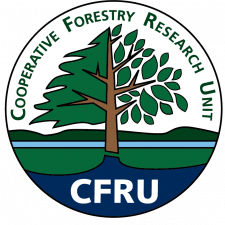
CFRU Information Report 19: Productivity of Maine’s Forest Underestimated More Intensive Approaches are Needed
- Greenwood, Michael S.
College of Forest Resources, University of Maine, Orono - Seymour, Robert S.
College of Forest Resources, University of Maine, Orono - Blumenstock, Marvin W.
College of Forest Resources, University of Maine, Orono
Maine's forest industry competes directly with mills in the southeastern United States and eastern Canada, where future wood supplies will depend increasingly upon artificially regenerated stands. In the South, one billion seedlings (most of which are genetically improved) are planted every year, enough to regenerate two million acres at 500 trees per acre (Mills and South 1984). By the year 2000, over half of the pine harvest in the South is expected to come from plantations (Knight 1987). In Georgia, which has about the same volume of softwood growing stock as Maine, nearly 125,000 acres per year were artificially regenerated on non-industrial timberlands (Cubbage and Hodges 1986) - nearly 17 times that on all industrial lands in Maine (Table 1). In New Brunswick, which has roughly the same commercial forest area as Maine, Provincial nurseries produced over 57 million seedlings in 1985 (Hallet and Lanteigne 1986). In 1983 (the most recent data available), over 55,000 acres were planted in the province (Khunke and Brace 1986); since 1960, J.D. Irving Ltd. alone has planted over 200 million trees on a three-million acre land base. Other neighboring provinces also plant significant areas: in 1983, Ontario and Quebec planted 93,000 and 42,000 acres, respectively. should Maine follow the "Iead" of its competitors and greatly accelerate artificial regeneration programs, or will its traditional reliance on natural regeneration sustain its industry?

You must be logged in to post a comment.